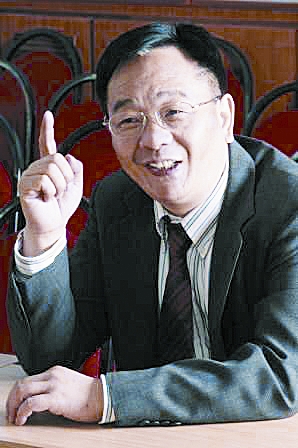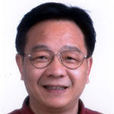人物簡介
聘任崗位:藥理學。
個人經歷
1985年起擔任美國輝瑞製藥公司臨床前研究顧問;
1987年起在史丹福大學工作,主要從事分子細胞生物學和分子藥理學研究;
1992年獲史丹福大學分子細胞生理學專業博士學位;
1992年起在史丹福大學醫學院工作期間歷任研究科學家、高級科學家、高級副研究員和高級研究員; 2003年度高層次留學人才回國資助人員;
2004年度教育部“長江學者特聘教授”。
研究領域
胡卓偉從1987年起在
史丹福大學工作,主要從事分子細胞生物學和分子藥理學研究。研究方向為G蛋白偶合受體介導的細胞生物學反應中的信號傳導機制和G蛋白偶合受體介導的真核基因表達調控機制。在這個領域,與其合作者深入探討了經典或非經典信號傳導機制介導G-蛋白偶合受體,特別是腎上腺素能受體及其亞型和血管緊張素受體刺激的血管平滑肌細胞生物學反應,是在國際上最早提出並證明如下觀點的學者之一,即多肽類生長刺激因子所利用的信號傳導通道包括酪氨酸蛋白激酶、Ras/Raf/MAPK和PI3K/AKT/P70S6K等亦可以為G-蛋白偶合的受體所利用。由於這些信號傳導通道與生長刺激因子的生長刺激作用相關,因此G-蛋白偶合受體應該是血管平滑肌細胞重要的生長調節因子。主要研究結果在JCI、JBC、MolEndocrinol與MolPharmacol等雜誌發表。
胡卓偉的另外一個研究重點是了解血管平滑肌細胞生長調節機制在心血管疾病中的作用,特別是G-蛋白偶合受體和生長因子受體介導的細胞生物學反應參與血管平滑肌細胞炎症反應的機制。胡卓偉和其合作者在這個領域的研究,發現應激激素和神經遞質是促使血管平滑肌細胞生長的重要調節因子。這些研究也提示應激激素通過刺激炎症反應的信號通道,促使血管平滑肌細胞生長而參與心血管疾病的發病,因此應激反應可能是血管疾病的重要病因。這些研究為一個長期的假說,即慢性應激反應參與心血管疾病的發病,提供了理論上的證據。
研究領域包括
免疫生物學和
免疫藥理、心血管
生物學和
心血管藥理、分子
細胞生物學和
蛋白質組學、受體和信號傳導通道的調節機制。本研究室的長期研究目標是研究許多嚴重威脅公眾健康和生命的疾病機制,在深入了解疾病發生髮展機制的基礎上,開發能夠預防和治療這些疾病的藥物。
回國後,胡卓偉選擇具有重要理論和實際意義、具有挑戰性的研究課題:纖維增生性疾病發生和發展的分子細胞機制,在深入理解纖維增生性疾病分子機制基礎上,開發抗組織纖維化藥物。組織纖維化是多種嚴重威脅人類健康疾病的基本病理改變,累及人體幾乎所有器官和系統,是許多疾病致殘、致死的主要原因。目前沒有任何有效治療組織纖維化疾病的藥物。胡卓偉研究員和他領導的研究組正在使用不同的組織纖維化動物模型和細胞模型,從免疫學角度研究組織纖維化發生和發展的分子細胞機制。
免疫反應包括先天性免疫反應和獲得性免疫反應。先天免疫系統是人體對內源性和外源性致病原產生免疫應答和急性炎症反應的第一道防線。先天免疫系統主要由補體、多形核細胞、天然殺傷細胞(NK)
樹突狀細胞(DC)等組成。獲得免疫系統主要由白細胞和淋巴細胞介導包括體液免疫反應和細胞免疫反應。體液免疫反應由B淋巴細胞分泌的抗體介導,細胞免疫由
T淋巴細胞分泌的
細胞因子介導。T細胞包括細胞毒T(Tc)、幫助T(Th)和調節T(Treg)細胞。先天性免疫系統的幾個成分通過不同的機制促使抗原提呈細胞特別是樹突狀細胞(DC)成熟,決定了獲得性免疫系統中
B淋巴細胞發育和T淋巴細胞分泌的Th1、Th2細胞因子的極化方向。獲得性免疫反應的Th1或Th2細胞因子極化方向改變是許多疾病例如組織纖維化和組織重構的關鍵因素。目前,我們的研究方向包括具有抗原呈遞功能的DC細胞和NK細胞之間的相互作用;DC細胞和T細胞之間的相互作用特別是DC細胞發育成熟及活性是如何決定Th1,Th2和調節性T細胞(Treg)發育方向。
組織纖維化是多種嚴重威脅人類健康疾病的基本
病理改變,累及人體幾乎所有器官和系統,是許多疾病致殘、致死的主要原因。目前沒有有效治療組織纖維化疾病的藥物。我們正在使用不同的組織纖維化動物模型和細胞模型,從免疫學角度研究組織纖維化發生和發展的病原生物學和病理生理學機制。我們的目的是在深入理解纖維增生性疾病分子機制基礎上,開發抗組織纖維化藥物。因此,本課題具有重要的理論和實際意義。
心血管疾病嚴重危害人類的健康。全世界許多國家心血管疾病都是威脅人類健康的“第一殺手”,每年有一千七百萬人(1/3全球死亡率)死於心血管疾病。我們的研究方向包括研究心血管疾病的病原學和病理機制;心血管疾病發病過程中的信號傳導機制,特別是G蛋白偶合受體和生長因子受體介導的細胞生物學反應中的信號傳導機制和
真核基因表達調控機制。在此基礎上,發現治療心血管疾病的新藥靶,開發治療心血管疾病藥物。
學術成果
目前出版的教科書和專著
現已在JCI、JBC和Mol. Endocrol等雜誌發表論文三十多篇, 參與編寫英文《分子生物學方法》、《藥理學》、《臨床藥理學》、《受體藥理學》和中文《組合化學和新藥篩選》《藥理學方法》《當代藥理學》《器官纖維化基礎及中醫藥防治》等專著和教科書八部,並與其他合作者有六份專利申請,分別涉及抗病毒化合物、抗腫瘤化合物和抗心血管疾病藥物,正在中國、美國專利局待批。
1. Hu ZW: Drugs and Cardiovascular System. in Clive Page et al.(eds.) Integrated Pharmacology: Basic Science to Therapeutics. The Second Edition, 2002, Mosby, London.
2. Hu ZW: 新藥發現和篩選的藥靶選擇. 劉剛等編著:尋找新藥中的組合化學(Combinatorial Chemistry
for Drug Lead Discovery and Optimization ). 北京:科學出版社, 2003
3. Hu ZW and Lin RZ: Drugs and the Blood. in Clive Page et al.(eds.) Integrated Pharmacology: Basic Science to Therapeutics. 1997, Mosby, London.
4. Lin RZ and Hu ZW: Therapeutics of Hematological Disorders. in Carruthers SG et al.(eds.) Melmon & Morrelli’s Clinical Pharmacology: The principles and practical application of therapeutics. The Fourth Edition, 2000, McGraw-Hill, New York.
5. Hu ZW and Hoffman BB: Nuclear run-on assays for measurement of adrenergic receptor transcription rate. in Machida (ed.) Adrenergic Receptor Protocols. The Methods in Molecular Biology (series editor: John Walker), 1999, Humana Press, Totowa, New Jersey.
目前發表的代表性論文
[1]. Hu ZW, Kerb R, Shi XY, Wei-Lavery T, Hoffman BB: Angiotensin II increases expression of cyclooxygenase-2: implications for the function of vascular smooth muscle cells. J Pharmacol Exp Ther. 2002, 303:563-573.
[2]. Hoffman BB and Hu ZW: Alpha(1)-adrenoceptors (alpha(1)-AR) and vascular smooth muscle cell growth. Prostate Suppl. 2000, 9:29-33.
[3]. Hu ZW, Shi XY, Lin ZR, and Hoffman BB: Alpha1-Adrenergic Receptor Stimulation of Mitogenesis in Human VSMCs: Role of Tyrosine Protein Kinases and Calcium in Activation of MAP Kinase. J. Pharmacol. Exper. Ther. 1999, 290:28-37
[4]. Chen J, Lin RZ, Hu Z-W, and Hoffman BB: Alpha1-Adrenergic receptor activation of c-fos expression in transfected rat-1 fibroblasts: role of Ca2+. J. Pharmacol. Exper Ther. 1999, 289:1376-1384.
[5]. Hu ZW, Shi XY, Lin ZR, and Hoffman BB: Differential Signaling Pathways Mediate Alpha1 AR Subtype Activation of Phosphatidylinositol 3-Kinase in transfected NIH3T3 Cells. Role of Gbeta/gama subunits. Mol. Endocrol. 1999, 13:3-14
[6]. Hu ZW, Shi XY, and Hoffman BB: Doxazosin inhibits proliferation and migration of human vascular smooth muscle cells. J. Cardiovasc. Pharmacol. 1998, 31:833-839
[7]. Lin RZ, Chen J, Hu ZW, and Hoffman BB: Phosphorylation of the cAMP response element binding protein and activation of transcription by alpha1 adrenergic receptors. J. Biol. Chem. 1998, 273:30033-30038
[8]. Lin RZ, Hu ZW, Chin JH, and Hoffman BB: Heat shock activates c-Src tyrosine kinase and phosphatidylinositol 3-kinase in NIH3T3 fibroblasts. J. Biol. Chem. 1997, 272:31196-31202
[9]. Okazaki M, Hu ZW, Fujinaga M, and Hoffman BB: Alpha1 adrenergic receptor activation of protooncogene expression in arterial smooth muscle: regulation by NO and vascular injury. Rec. Sign. Trans. 1996, 6:165-178
[10]. Hu ZW, Shi XY, and Hoffman BB: Insulin and insulin-like growth factor I differentially induce alpha1 adrenergic receptor subtype expression in cultured vascular smooth muscle cells. J. Clin. Invest. 1996, 98:1826-1834.
[11]. Hu ZW, Shi XY, Lin RZ, and Hoffman BB: Alpha1 adrenergic receptors activate phosphatidylinositol 3-kinase in human vascular smooth muscle cells: roles in mitogenesis. J. Biol.Chem. 1996,271:9887-92
[12]. Chin JH, Okazaki M, Hu ZW, Miller JW, and Hoffman BB: Stimulation of alpha1 ARs induces transcription activation of heat shock protein 70 gene by enhancement of heat shock protein transcription factor in rat aortic smooth muscle. J. Clin. Invest. 1996, 97:2316-2323
[13]. Chin JH, Okazaki M, Frazier JS, Hu ZW, and Hoffman BB: Impaired cAMP-mediated gene expression and decreased cAMP response element binding protein in senescent fibroblasts. Am. J. Physiol. 1996, 271:C362-C371
[14]. Thomas JM, Frazier JS, Hu ZW, and Hoffman BB: Phosphorylation of cAMP response element binding protein and induction of c-fos gene expression upon withdrawal from chronic treatment with carbachol in NG108-15 cells. Mol. Pharmacol. 1995, 48:593-600
[15]. Fujinaga M, Hu ZW, Okazaki M, Baden JM and Hoffman BB: Expression of mRNA for alpha1 ARs subtypes at the beginning of neurulation in rat embryos. Teratology 1995, 9:601-6
[16]. Hu ZW, Shi XY, Okazaki M and Hoffman BB: Angiotensin II induces transcription and expression of α1-adrenergic receptors in cultured rat vascular smooth muscle cells. Am. J. Physiol. 1995, 268:H1006-H1014
[17]. Okazaki M, Hu ZW, Fujinaga M, and Hoffman BB: Alpha1 adrenergic receptor-induced c-fos gene expression in rat aorta and cultured vascular smooth muscle cells. J. Clin. Invest. 1994, 94:210-218.
[18]. Hu ZW and Hoffman BB: Cycloheximide activates transcription of alpha1B AR gene expression in DDT1 MF-2 smooth muscle cells. Mol. Pharmacol. 1993, 44:1105-1112
[19]. Hu ZW, Shi XY, Sakaue M, and Hoffman BB: prolonged activation of protein kinase C by phorbol esters induces transcription and expression of the alpha1B-AR gene in DDT1 MF2 cells. J. Biol.Chem.1993,268:3390-95
[20]. Hu ZW, Miller J W, and Hoffman BB: Induction of enhanced release of endothelium-derived relaxing factor following prolonged exposure to alpha adrenergic agonists: role in desensitization of smooth muscle contraction. J. Cardiovasc Pharmacol. 1994, 23:337-343
[21]. Hu ZW, Arzha S, and Hoffman BB: Prolonged activation of alpha 1 adrenergic receptors resulted in down-regulation of protein kinase C in rat aortic smooth muscle. J. Cardiovasc. Pharmacol. 1992, 20:982-989
[22]. Hu ZW, Honda K, Murad F, and Hoffman BB: Prolonged exposure to catecholamines enhances sensitivity of SM relaxation induced by sodium nitroprusside and atrioptin. J. Pharmacol. Exp.Ther. 1992, 260:756-61
[23]. Hu ZW, Billingham M, Tuck M, and Hoffman BB: Captopril Improves hypertension and cardiomyopathy in rats with pheochromocytoma. Hypertension 1990; 15:210-215
[24]. Hu ZW. Effect of nifedipine on platelet function. Chung Hua Hsin Hsueh Kuan Ping Tsa Chih 1986, 14:145-146
[25]. Hu ZW. Abnormalities of myocardial lipid metabolism and advances of drug intervention in acute myocardial ischemia. Sheng Li Ko Hsueh Chin Chan 1984, 15:35-40 [2]
 胡卓偉教授
胡卓偉教授
 胡卓偉教授
胡卓偉教授